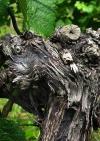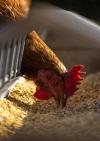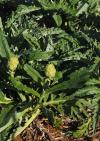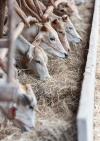Media Library
Documentary, graphic and/or audiovisual knowledge objects are offered here, offering information on various sectors and topics. Use the keyword search or search filters to access current audiovisual and documentary knowledge objects useful for your implementation.
If you have any questions or suggestions, please contact us here.

What is the asset value of a farm?
For a fair valuation of agricultural land, the total costs involved in managing a farm must be considered, without overlooking factors that, in certain cases, generate significant differences in agricultural accounting and, therefore, in the income to be considered as a starting value.

Phytopathological Problems of Strawberry Cultivation in Huelva
To assess the impact of plant pathology problems on strawberries and the perceived effectiveness of plant protection products, a survey was conducted among plant health technicians responsible for strawberry crops in Huelva.

Short Channels for Organic Vegetables in Almería and Granada. Analysis of Marketing Experiences
Short-channel marketing experiences refer to a set of initiatives focused on food production, distribution, and consumption. These initiatives are developed, in most cases, as alternatives to more widespread forms of these activities. The objective of this study is to explore the current status of these initiatives in the marketing of organic vegetables in the provinces of Almería and Granada.

Implantation and management of Sinapis alba subsp. Mairei for plant cover and biofumigation
Procedure for the correct implementation and management of a Sinapis alba subsp. mairei plant cover and its use for biofumigation

Sustainable Olive Grove Systems.
It sets out the commitments to be fulfilled by all beneficiaries of this operation, with the aim of implementing good agro-environmental practices by making sustainable use of the natural resources that coexist with olive cultivation, making it a profitable crop both economically and environmentally.

Irrigation recommendations for olive groves in the 2022-2023 campaign
Irrigation recommendations for olive groves during years of low rainfall, offering strategies to mitigate, as much as possible, the effects of water stress on olive and oil production.

Use of manual and electronic tensiometers for irrigation management
Tensiometers are instruments that measure the matric potential or matric tension of soil. This is an indirect measure of soil moisture and is caused by the forces that retain water in the capillaries and on soil particles.

Animal Welfare in Poultry Farms
Manual intended for use in courses on Animal Welfare in Poultry Farms. The courses will have a minimum duration of 20 hours and are intended for owners and those working on poultry farms.

Optimizing Irrigation and Fertilization in Sunflower Cultivation
To further our understanding of the interaction between water and fertilizer requirements in sunflower cultivation, a three-year experiment was conducted testing different irrigation volumes, different fertilization strategies, and their potential interactions on seed yield, oil content, and other yield components. This document presents the results of the experiment.

Environmental impact of olive cultivation in Andalusia
The objectives of this study were to analyze the environmental impacts of existing olive production systems in Andalusia, select and improve agricultural practices to identify the processes that cause the most significant environmental problems, and design a more efficient and environmentally friendly olive cultivation management system.

Multifunctionality of olive farms in Andalusia based on the agricultural techniques implemented
The objectives of this study are, first, to develop an integrated model for assessing the multifunctionality of olive groves in Andalusia based on the ANP technique, and second, to apply this model to improve the design of agri-environmental policies focused on multifunctionality, defining the agricultural practices with the greatest potential to affect the multifunctional performance of olive

Use of copper-storing plants for phytoremediation of agricultural soils. Application to the Phytobac system.
The main objectives of this work are: 1) the selection of plants capable of accumulating and immobilizing heavy metals in their aerial parts (phytoremediation) to be used in soils contaminated by heavy metals, mainly copper, since its use is still permitted in agriculture and 2) the subsequent implementation of the Phytobac system.

Recommendations for Making Soft Cheese with Moldy Rind
Externally moldy soft cheeses are characterized by the presence of a white outer coating, caused by the growth of Penicillium molds on the surface. The presence of this mold gives these cheeses a distinctive appearance, aroma, and flavor. These cheeses originate in France and are increasingly popular among consumers, with demand for them increasing.

Recommendations for Making Pressed Cow Cheese
Cheeses made from cow's milk are typical of the northern part of the Iberian Peninsula, where cattle are predominantly farmed. The production of this product, as with goat and sheep milk, was born with the aim of enhancing the value of the raw material, milk, and obtaining greater returns from livestock farms. Today, there is a wide variety of cheeses made from cow's milk nationwide.

Recommendations for Making Lactic Coagulation Cheese
Cheeses made using lactic coagulation originate in France, where they are primarily made from goat's milk, due to the productive potential of the country's goat herd. The beginning of this type of cheese dates back to the 18th century, when Muslim expansion led to the introduction of goats into France, with their milk being used in the production of this dairy product.

Agronomic Response of Rice to Saline Irrigation in Different Phases of Cultivation
The results presented here are derived from the work carried out within the research project "Agronomic Response of Rice to Saline Irrigation at Different Crop Phases," initiated and defined by Hisparroz, SA, in collaboration with IFAPA, as part of the line of work on Rice Cultivation Sustainability.

Search for herbicidal active ingredients in grain legumes. Pre-emergence herbicides in broad beans.
Grain legumes have traditionally been cultivated in Andalusian drylands primarily for the production of vegetable protein for human and animal consumption. One of the main reasons for their abandonment as a crop has been the lack of approved pre- and post-emergence herbicides, especially against dicotyledons.

Effect of Baking Temperature on the Physical-Chemical and Nutritional Quality of Dehydrated and Regenerated Peppers Ready for Consumption.
Ready-to-eat foods are highly demanded by today's society in developed countries due to the lifestyle changes that have occurred in recent decades. Cooked vegetables stand out among these foods. The heat treatments they undergo produce physical, chemical, and nutritional changes that need to be characterized. Furthermore, these products typically have a relatively short shelf life.

Quality parameters in fresh tomatoes
External aspects (presentation, appearance, uniformity, ripeness, freshness) are the main components of the decision to purchase tomatoes for fresh consumption. Internal quality (flavor, aroma, texture, nutritional value, absence of biotic and abiotic contaminants) is linked to aspects that are generally not perceptible but are no less important for consumers.

Application of biocides for veterinary hygiene
Changes in regulations and the need to adapt and update content justify the new edition of the Book on the Application of Biocides for Veterinary Hygiene.



